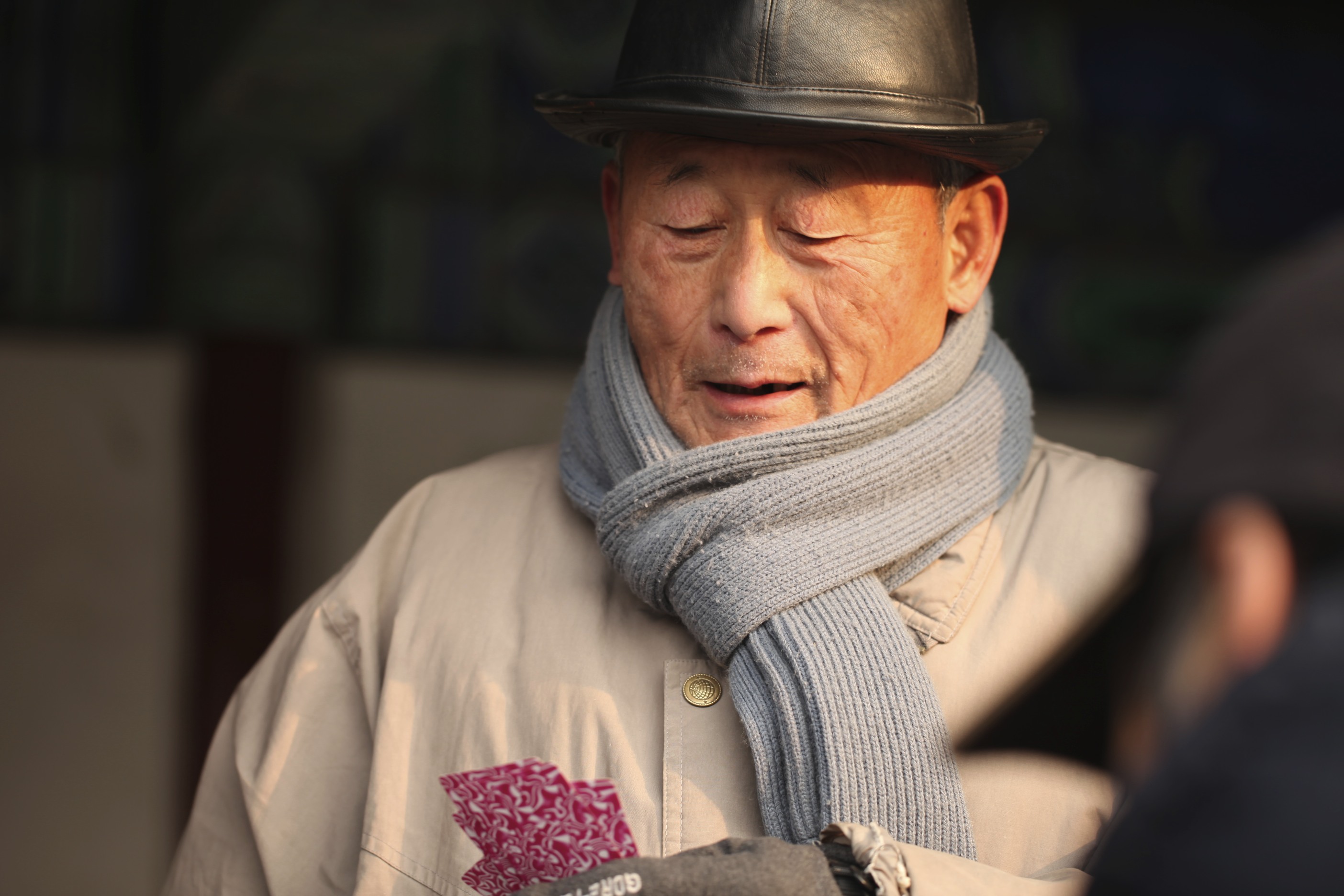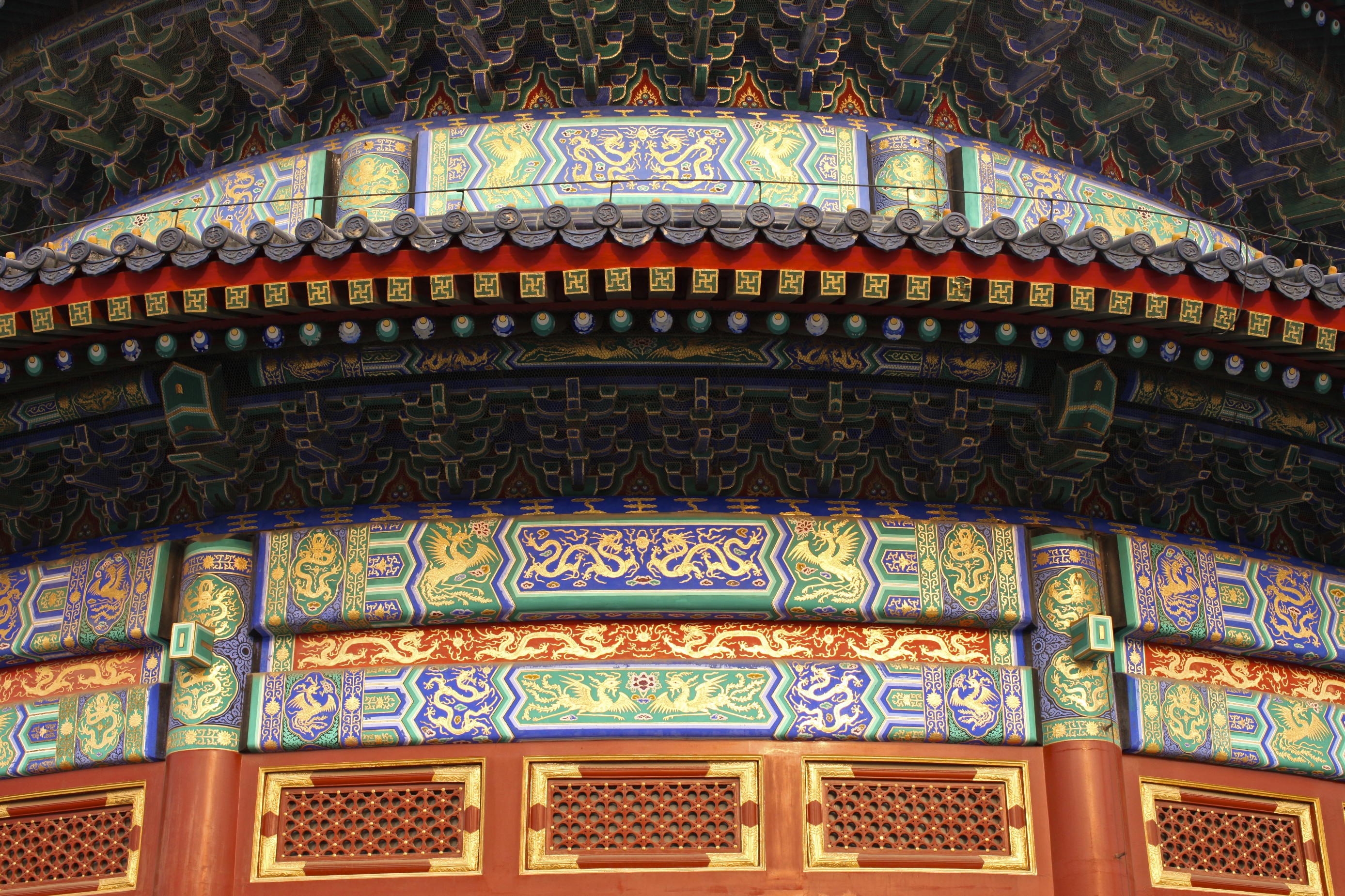It’s 530 in the morning. From the high floor of my hotel room at the China World Summit Wing I loom down to the street. Although I am not comfortable with nights I cannot avoid staring at the tiny cars aligned on the large avenue like ants working on a winter day.
From my living room window, the impressive view of Beijing’s Central Business District (CBD), Chaoyang District and the New China Central Television ( CCTV ) Tower – the new landmark comprising of two L-shaped high-rise towers connected at the top and the bottom at an angle to form a loop of the Television Tower, reigns supreme like a far away temple facing the Forbidden City roofs at the horizon.
The hotel concierge suggested we woke up very early this morning to pay visit at the Tinanan Park.
6 30 AM. The sound of flutes, vintage record players , and colorful ribbons moving among a disciplined crowd of men and women in costume , normal clothes or velvet outfits : a spectacle not to be missed , where hundreds of the old generation Beijing practice all sorts of therapeutical activities such as folk dances, classical music performances , social games and sports.
The most noisy ones are the grops betting on a Chinses old game Xiangqi also known as Chinese ches. It is a Chinese strategy board game for two players. It is one of the most popular board games in China. The game represents a battle between two armies, with the object of capturing the enemy’s general (king). Distinctive features of xiangqi include the cannon (pao), which must jump to capture; a rule prohibiting the generals from facing each other directly; areas on the board called the river and palace, which restrict the movement of some pieces; and placement of the pieces on the intersections of the board lines, rather than within the squares.
The magninficent complex reveals itself through a series of wooden entrance doors. It was visited by the Emperors of the Ming and Qing dynasties for annual ceremonies of prayer to Heaven for good harvest. It has been regarded as a Taoist temple, although Chinese Heaven worship, especially by the reigning monarch of the day, pre-dates Taoism.
The temple complex was constructed from 1406 to 1420 during the reign of the Yongle Emperor, who was also responsible for the construction of the Forbidden City in Beijing, then renamed Temple of Heaven during the reign of the Jiajing Emperor in the 16th century.
The park contains three main groups of buildings, all constructed according to strict feng shui requirements: the Earthly Mount, the House of Heavenly Lord, and the Hall of Prayer for Good Harvests. Although most visitors approach the park from the north or west, the ceremonial route begins in the south.
The central pathway leads straight to the Round Altar (, a platform of three marble tiers representing Man, Earth and Heaven. Each tier is made of blocks in various multiples of nine, which was seen as the most powerful odd number, symbolizing both Heaven and Emperor.
The platform is now bare, but in imperial times the Throne of Heaven was placed at the very center. This was considered to be the middle of the Middle Kingdom and the very center of the earth. To the east are ruins of a group of buildings used for the preparation of sacrifices.
The path continues to the House of Heavenly Lord a round building made entirely of wood and topped with a splendid roof of dark blue glazed tiles. It is built on a single level of marble stone base, where the altars were housed when not in use.
The House of Heavenly Lord is preceded by a curved wall, 6m tall. It is known as the Echo Wall for its unique acoustics that allow a person at one end of the wall to hear the voice of a person at the other end of the wall. However, the unceasing noise of everyone trying it out make it impossible to tell.
At the north end of the park is the main temple building, the Hall of Prayer for Good Harvests . This magnificent round building is made entirely of wood without the use of a single nail. It stands on a three-tiered square marble base and has three blue-tiled roofs of harmonious proportions. The interior is painting in dazzling colors.
The Hall of Prayer is filled with numerological symbolism. It is 32 meters in diameter and 38 meters tall. It has four inner pillars, representing the four seasons, 12 middle pilllars, symbolizing the 12 months, and 12 outer pillars, representing the 12 Chinese watches of the day.
The Temple of Heaven is the grandest of four great temples in Beijing, the others being the Temple of Sun in the east , the Temple of Earth in the north, and the Temple of Moon in the west
The Temple of Heaven was inscribed as a UNESCO World Heritage Site in 1998 and was described as “a masterpiece of architecture and landscape design which simply and graphically illustrates a cosmogony of great importance for the evolution of one of the world’s great civilizations…” as the “symbolic layout and design of the Temple of Heaven had a profound influence on architecture and planning in the Far East over many centuries.
Heaven is often described as a “higher place”, the holiest place, a Paradise. For obvious reasons Chinese people are much wiser that one might think and It ‘s not difficult to understand why so many locals find for more that three centuries a sheltering heaven-on-earth early mornings in parks and around temples: a state of mind with an attitude that Westerners brag so loud nowadays and innocently interpret as ‘ Heathy Lifestyle”



































